
Stories from my travels and other things that interest me. Enjoy.
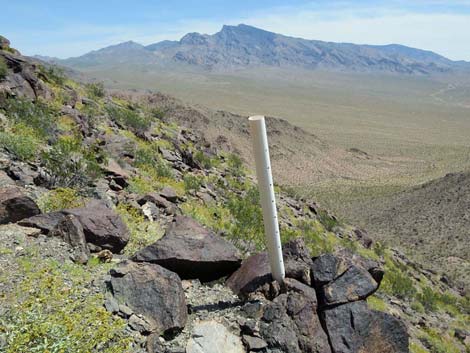 |
Removal of Hollow-Pipe Mining-Claim Markers from Gold Butte National Monument Hollow-pipe mining-claim markers were set up by prospectors during about 1970 to 1990 to mark the corners of their claims. Prior to that time, prospectors in the western deserts used piles of stones (cairns) as corner markers. As would be expected, looking for a pile of stones in the desert, which many people feel is "just a pile of stones anyways," can be difficult. Later, prospectors added 5-foot tall, 4x4-inch wooden posts to their cairns to make them more visible on the landscape, but wooden posts are heavy and awkward to haul around. With the availability of inexpensive PVC plastic pipes starting in the 1960s, 3- and 4-inch diameter, white PVC pipes became favored mining claim markers because they are light weight and visible from 3 miles away. |
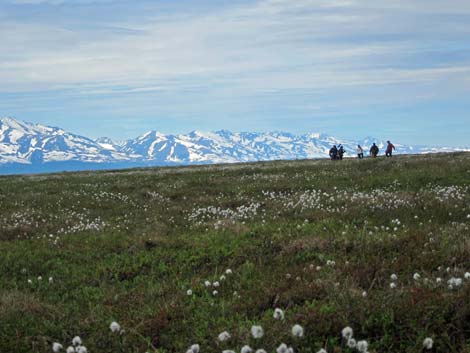 |
Alaska Birding Trip -- June 2018 I've planned to return to the interior of Alaska since I was there for the Summer of 1978, and Liz has never been there, but we haven't done a very good job of planning a road trip. This summer, we decided to skip the planning, skip the road trip, and just join a Birding Tour with the Wings outfit. We flew to Anchorage and based our expeditions out of there. We took three in-state flights visiting the Pribilof Islands in the middle of the Bering Sea, Nome in northwest Alaska, and Point Barrow at the northern tip of Alaska. Via ground transportation, we visited Denali National Park, and by boat we did some offshore birding in the Gulf of Alaska. |
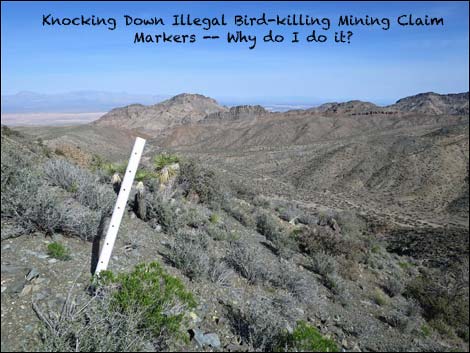 |
Knocking Down Illegal Bird-killing Mining Claim Markers A passion for nature and wild places; a duty to give back. |
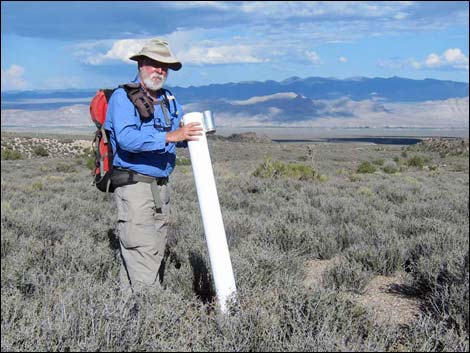 |
A scourge on the landscape, illegal hollow mining claim markers dot the landscape trapping and killing birds, bats, lizards, small mammals, and countless beetles and other insects. Since about 1990, Nevada law has empowered citizens to knock down these bird-killing hollow pipes. Let's all work together to take down these markers and stop the needless killing of our precious wildlife! |
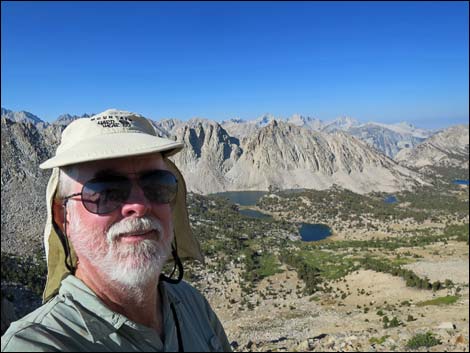 |
John Muir Trail Backpacking -- August 2016 When I was 15 and 16 years old, I spent the summers hiking in the Sierra Nevada Mountains. During both summers, I walked about 100 miles of the 212-mile-long John Muir Trail (JMT). The trips overlapped somewhat, and in total I walked 171 miles of the JMT. Since then, I've always wanted to finish the southern 43 miles. For more information on my developing quest, see my blog article. On August 18, 2016, I began what I hoped would be a 21-day thru-hike of the JMT totaling some 245 miles without resupply, or at the least, I would hike the final 43-mile section of my 40-some-year quest to finish the JMT. Unfortunately, I completed neither and the Quest survives. |
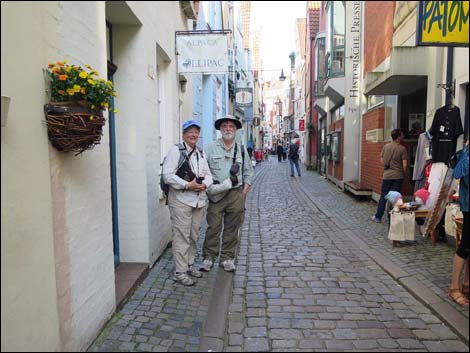 |
Overseas Travel and Urban Birding — Part 1: Germany April 27 - May 09 Click the title to see the blog. We describe the sights and events encountered while traveling to London, spending time in London, Canterbury, and Dover with family, and doing a bit of urban birding. |
 |
Overseas Travel and Urban Birding — Part 1: England April 17-27 Click the title to see the blog. We describe the sights and events encountered while traveling to northern Germany, spending time in wild places and urban cities, doing a bit of birding, and getting to know our best friends in Germany. |
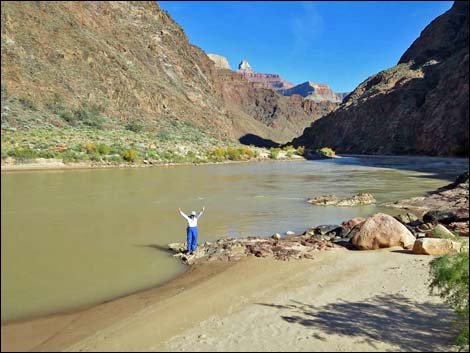 |
Grand Canyon Backpacking Trip with Liz; November 2015 Liz and I spent a wonderful five nights below the rim, checking off a bucket-list item: getting Liz to the bottom of the Grand Canyon (and back). We started during a snow storm with 26-degree temperatures, but after the first day, the weather was grand -- if a bit cool. Liz did surprisingly well on the hike, and we hiked out without any trouble or even sore muscles. |
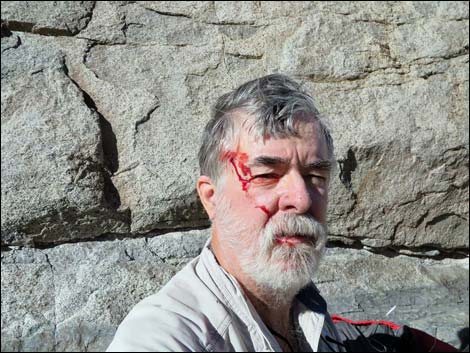 |
The Fall; October 29, 2014 In late October while hiking alone in the Mount Wilson Wilderness Area in northwest Arizona, I took a tumble off a slick, water-polished granite ledge and tumbled some 30 feet to the bedrock wash below. I got pretty beat up, but I didn't break any bones and was lucky to be alive. I hobbled out 3 miles and drove home, but recovering from this will keep me off the long trails from some time. January 2015: my right wrist and right foot are still giving me trouble. |
 |
Mega Road Trip to Newfoundland; May-July 2014. Liz and I spend 10 weeks on a wonderful trip visiting friends and family, seeing some really wild country, and of course, spotting a lot of very cool birds. We drove across the country to Michigan, then up into Canada and eventually to Labrador where we made it to the northeast-most city serviced by paved roads in North America. Coming down the iceberg encrusted coast, we spent a couple of weeks in Newfoundland visiting life-list birding and historic sites. A 13-hour ferry ride brought us back to continental North America where we birded and camped in Nova Scotia and New Brunswick. Returning to the US, we birded Maine, Massachusetts, and Upstate-New York before making a quick trip home and putting a total of 12,000 miles on the van. We had wanted to visit Bird Rock in Newfoundland for some 30 years, and finally we did it! |
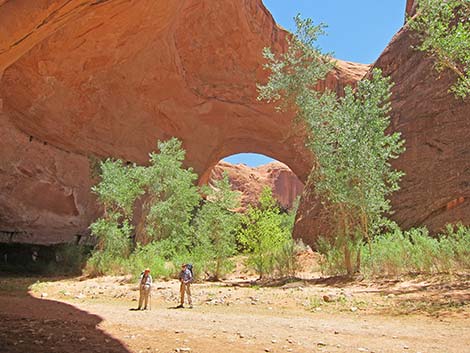 |
Backpacking in Utah for Fireflies; June 2013. In 2010, I hiked into Coyote Gulch with a Sierra Club group and documented the presence of fireflies near Jacob Hamblin Arch. I posted photos online, and over the last three years, I've been contacted by entomologists from around the country. Finally, I set up a trip to get a firefly expert to the site with the proper collecting permits. Liz and I took a retired professor on a grand 3-day trip down Coyote Gulch. We collect three male fireflies for science and recorded notes on their behavior (e.g., timing of the flash pattern) and habitat. Hopefully our efforts will reveal a firefly new to science. The professor, at age 70, had always wanted to go backpacking; hopefully this won't be his last trip. |
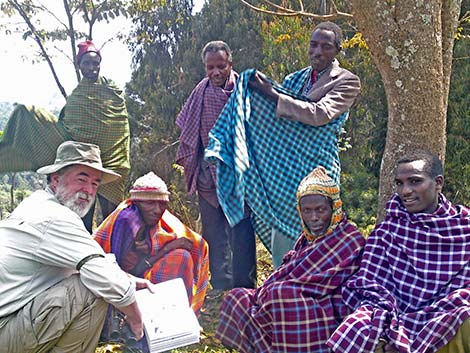 |
Tanzania, East Africa; July 07 to August 01, 2012. I spent most of July with my sister on a world-class adventure to East Africa. We spent most of our time in rural northern Tanzania. This was Safari Country, and I got to spend one grand day in Tarangire National Park watching lions, elephants, giraffes, and so many birds that I couldn't stand it any longer. We also spent a few days in Dar es Salaam on the southeast coast of the country. Photo at left: bird watching with the locals in the mountains above Mbulu. |
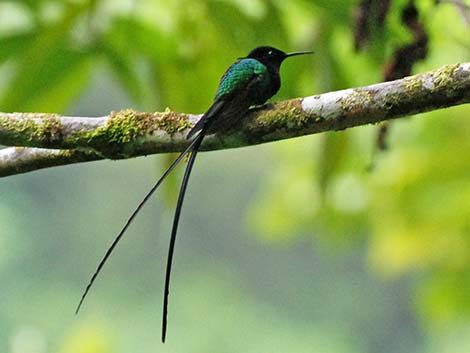 |
Jamaica Birding with the Humboldt State Alumni Association; January 2012. |
 |
Ecuador and the Galapagos Islands; October 2011. We joined a UNLV Continuing Education trip and went to Ecuador in a party of 15 for 10 days. We arrived in Quito (capital of Ecuador) and spent two nights in an eco-lodge in the Andes Mountains. We then flew some 600 miles off shore and stayed at the Galapagos for 5 busy days and 4 nights on a yacht. Returning to the mainland, we spent 3 more nights in eco-lodges. The experience was wonderful, the scenery grand, and the birds unbelievable. |
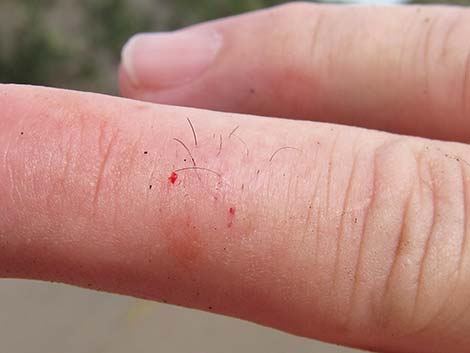 |
Chronicle of recovery from the bite of a Texas Coral Snake; 2010-2011. Here, only four minutes after the bite, we are heading for the car and I know I'm in big trouble. This page follows my treatment and recovery. |
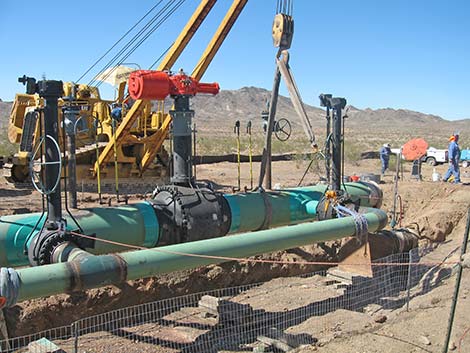 |
Taking care of Desert Tortoises on a natural gas pipeline project. |
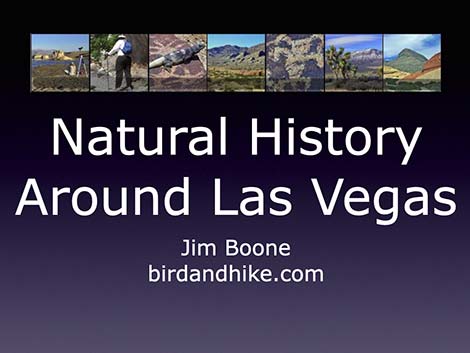 |
Around the Bend Friends Hiking Club slideshows. I used these powerpoint slides to accompany my 10-minute monthly talks. Natural History of the Mojave Desert #1-4: Wandering about the Mojave Desert Natural History of the Mojave Desert #5: The concept of life zones |
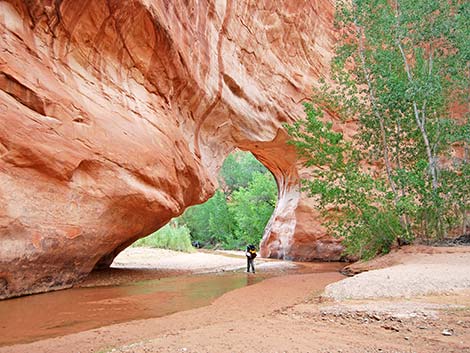 |
Backpacking Coyote Gulch; June 29 to July 4, 2010. Backpacking with the Sierra Club in Coyote Gulch, Grand Staircase - Escalante National Monument and Glenn Canyon National Recreation Area. A dozen of us headed for the canyons of the Escalante to bask in the glory of red sandstone chasms, listen to the spring serenade of birds and toads, and skip through fish-filled sandy steams. |
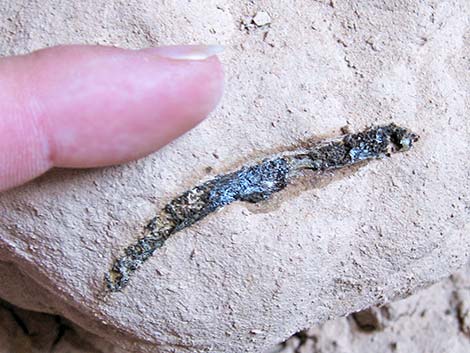 |
Unidentified Scat; April 2009. This is a real question: Can you identify this specimen? |
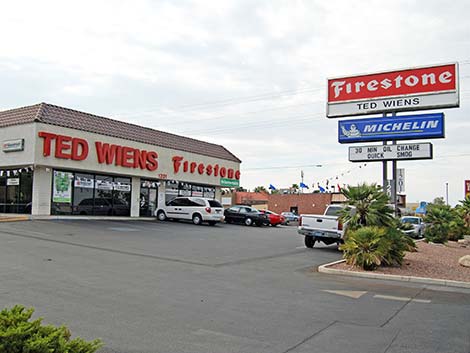 |
Great Local Business Goes Bad when Long-time Manger Retires; 2008. Save your money, prevent stress and headaches, don't do business with Ted Wiens Firestone! |
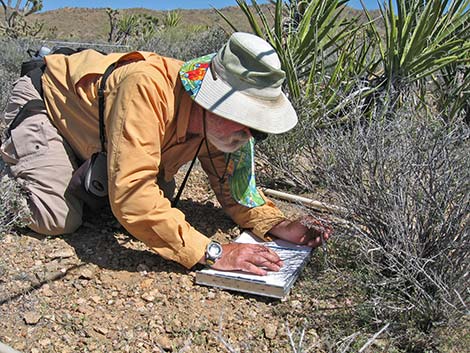 |
The Perfect Seasonal Job Goes Bad; Spring 2006. The Perfect Seasonal Job Goes Bad when I refused to commit scientific fraud. Although this low-paying, seasonal job didn't work out, it played a pivotal role in my life by giving me incentive (a fun job) to finally leave my miserable but high-paying corporate job on the Yucca Mountain Project. If life remains good, I will never again work in a corporate cubicle. |
Note: All distances, elevations, and other facts are approximate.
![]() ; Last updated 240223
; Last updated 240223
| Hiking Around Las Vegas | Guide Services | Glossary | Copyright, Conditions, Disclaimer | Home |